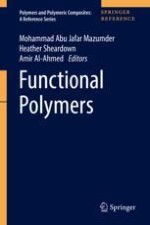2019 | OriginalPaper | Chapter
26. Enhanced Oil Recovery
Authors : Muhammad Shahzad Kamal, Abdullah S. Sultan
Published in: Functional Polymers
Publisher: Springer International Publishing
Activate our intelligent search to find suitable subject content or patents.
Select sections of text to find matching patents with Artificial Intelligence. powered by
Select sections of text to find additional relevant content using AI-assisted search. powered by
